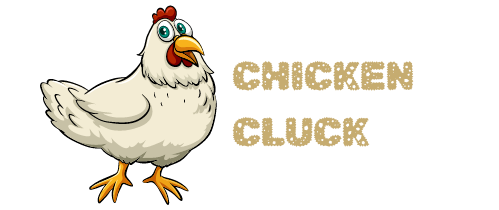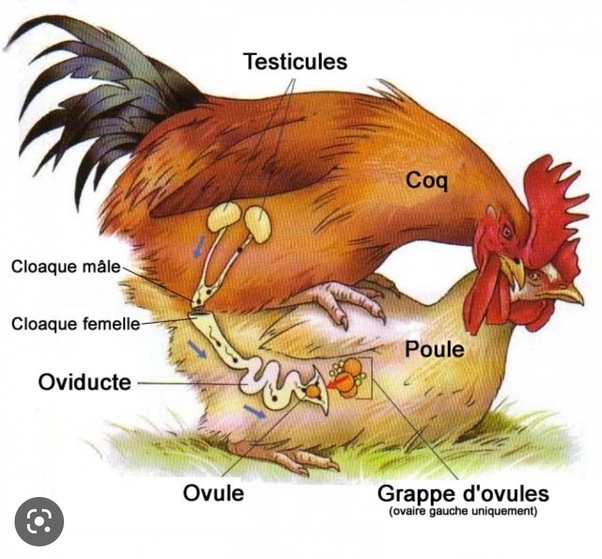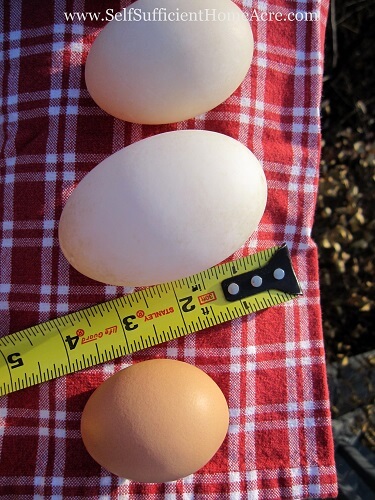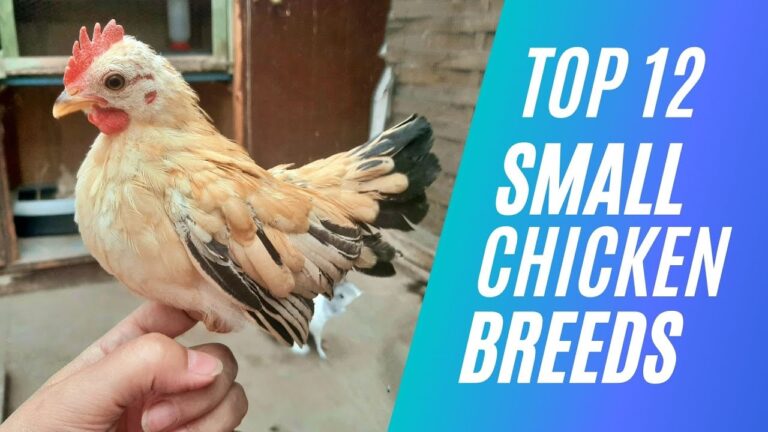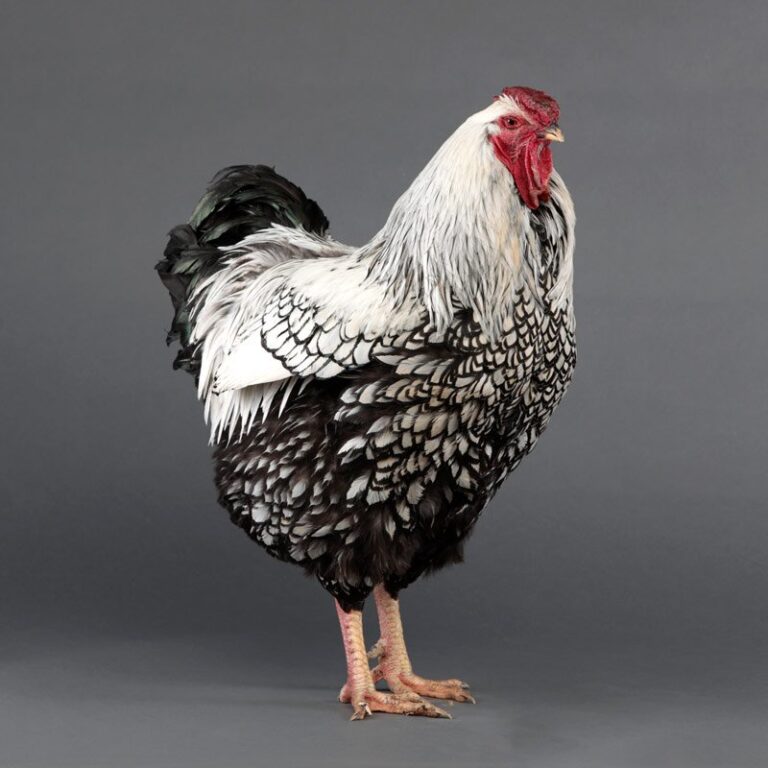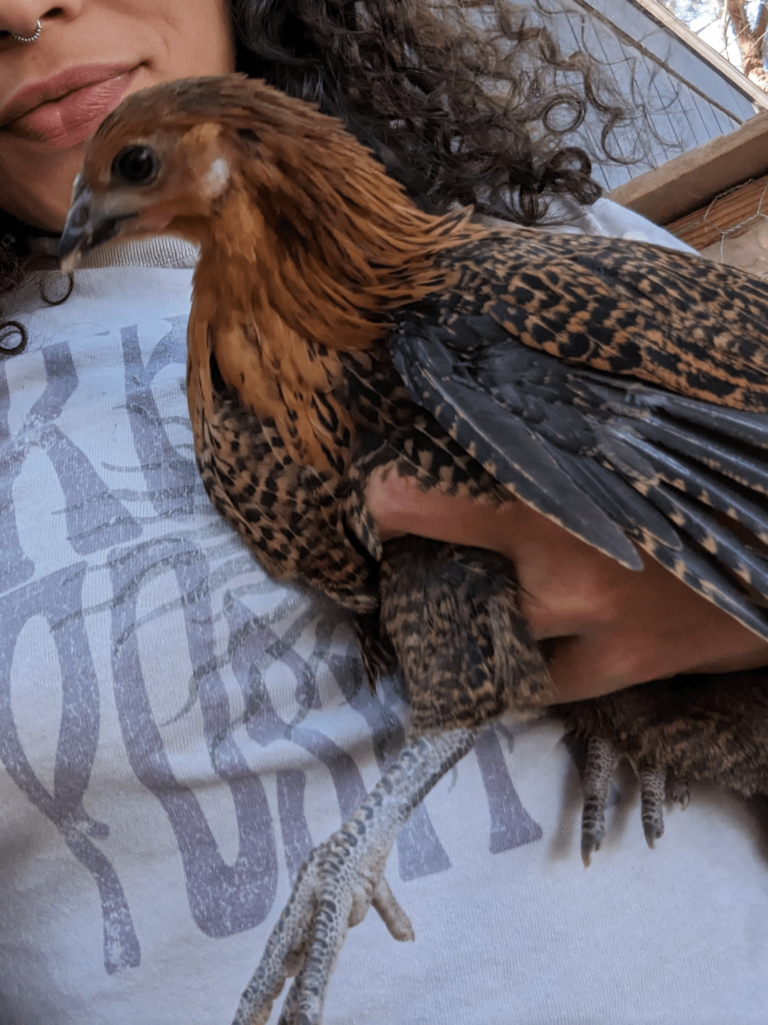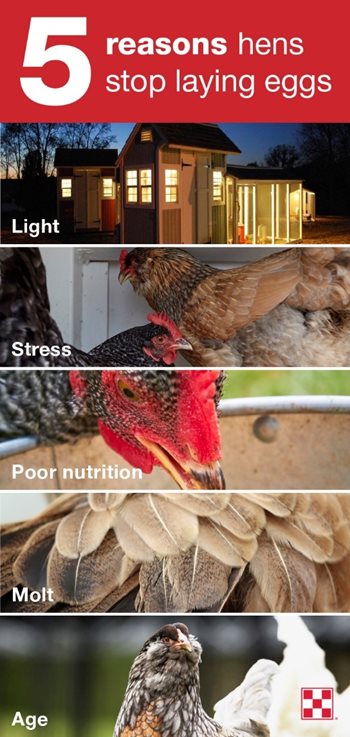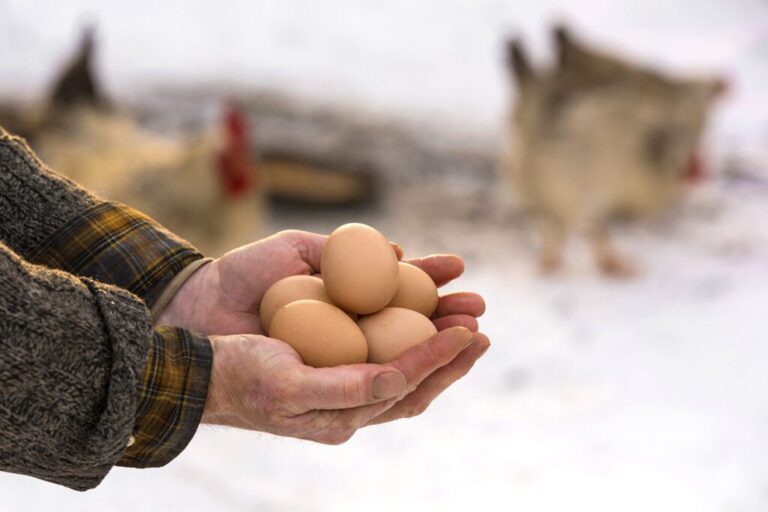Hens mate with roosters through a process called “cloacal kissing.” This brief contact allows sperm transfer from the rooster to the hen.
Understanding the mating rituals of chickens reveals the intricacies of poultry reproduction. For backyard farmers and avian enthusiasts, the relationship dynamics between hens and roosters can be both intriguing and critical to managing a healthy flock. Roosters typically engage in a courtship dance to attract hens, fluffing their feathers and performing what’s known as a “tidbitting” display, often accompanied by clucking sounds to lure the hen’s attention.
The actual act of mating is quick and occurs when both the hen and rooster’s cloacas – the multi-purpose opening for their digestive, urinary, and reproductive tracts – are briefly pressed together. This moment of contact, though fleeting, is designed by nature to be remarkably efficient for reproduction in the avian world. By ensuring the safety and comfort of the hens, flock keepers can promote a stress-free environment conducive to successful mating rituals.

Credit: www.youtube.com
The Courtship Rituals Of Chickens
When chickens mate, they perform a unique dance. This dance is a sign of nature’s wonders. Roosters and hens have distinct roles in this process. Let’s take a closer look.
The Dance Of The Rooster
The rooster starts the ritual. His dance is key to the process. He circles the hen. His wing closest to her brushes the ground. This is known as “tidbitting”. It includes distinct movements and sounds. The dance is an invitation.
- Wing dropping
- Circling the hen
- Clucking or purring sounds
Hen Response To Rooster’s Advances
The hen observes the rooster’s dance. She must decide to accept or reject. If she accepts, she crouches. This is her signal. The rooster then knows he can proceed.
| Hen’s Actions | Meaning |
|---|---|
| Observing | Assessment |
| Crouching | Acceptance |
| Walking away | Rejection |
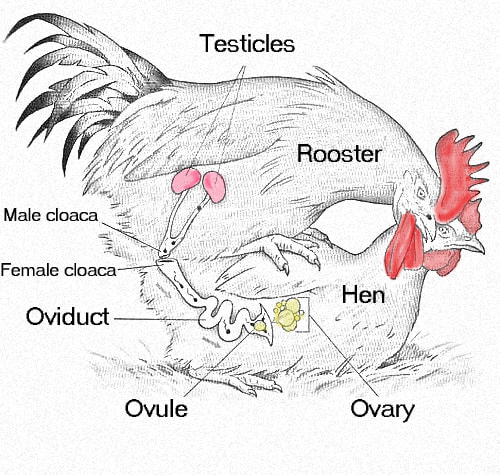
Credit: www.adelaidechickensittingservice.com
Anatomy Of Chicken Reproduction
Understanding how chickens mate starts with a peek into their unique anatomy. Chickens have evolved with reproductive systems quite different from many other birds. Let’s delve into the fascinating biology of roosters and hens.
Rooster’s Reproductive Organs
A rooster’s reproductive equipment is internal. The key parts are the testes and the vas deferens. Unlike mammals, roosters do not have an external penis.
- Testicles: Responsible for producing sperm.
- Vas Deferens: Ducts that carry sperm from the testicles.
- Cloaca: An opening that serves multiple purposes, including mating.
A rooster releases sperm from his cloaca into the hen’s cloaca during a process called the “cloacal kiss.” This allows for the fertilization of eggs.
Hen’s Reproductive System
The hen’s reproductive system is a one-way path designed to produce eggs. It consists of the ovary and oviduct. Each part plays a vital role in egg production and fertilization.
| Hen’s Reproductive Parts | |
|---|---|
| Ovary: | Releases an ovum (egg yolk). |
| Oviduct: | Tubular structure with different sections for egg formation. |
| Infundibulum: | Catches the ovum; site of fertilization. |
| Magnum: | Adds the egg white or albumen. |
| Isthmus: | Adds the shell membranes. |
| Shell Gland: | Forms the eggshell. |
| Vagina: | Passageway leading to the cloaca. |
Fertilization occurs internally before the egg white or other layers form. If the hen has mated, the sperm meets the ovum in the infundibulum. This is where life begins for a fertilized egg.
The Mating Process Step By Step
In the world of poultry, the dance of mating is both delicate and complex. It’s a ritual of natural instincts and subtle cues. Understanding how hens mate with roosters unlocks the marvels of avian reproduction. Each step is essential for the continuation of a flock.
Rooster’s Approach To The Hen
Initially, the rooster makes his interest known. He performs an intricate display. This may include wing flapping and ground scratching. The goal is to catch the hen’s eye.
- Circling: The rooster often circles around the hen, showcasing his feathers.
- Crowing: Loud crowing can signal his readiness for mating.
- Tidbitting: He may pick up and drop food to entice the hen.
If the hen appears receptive, she will crouch. This position indicates her willingness. The rooster then proceeds with the next step.
The Cloacal Kiss Explained
The phrase ‘cloacal kiss’ might sound strange. It’s a pivotal moment in poultry mating. The cloaca is a single opening in birds. It serves multiple functions: excretion, egg-laying, and mating.
- The rooster mounts the hen, balancing on her back.
- He aligns his cloaca with that of the hen’s.
- Precise contact: This allows for the transfer of sperm.
Post ‘kiss,’ the rooster dismounts. The hen shakes her feathers. This behavior helps spread the sperm. It increases the chance of fertilized eggs.
The process might repeat multiple times. It ensures successful fertilization and genetic diversity.
With each step, the cycle of life continues within the flock. Keen observation reveals the nuanced choreography of nature’s design for chicken reproduction.
Fertilization And Egg Laying
The dance of reproduction in the poultry world is both fascinating and complex. It starts with a brief encounter between a hen and a rooster. Fertilization and egg laying are the crucial steps in the journey of creating new life. Let’s explore how this process unfolds, journeying from the spirited courtship to the formation of a new egg.
Journey Of The Sperm Inside The Hen
Once the rooster performs the mating dance and successfully mounts the hen, the magic begins. The rooster’s sperm makes its way into the hen’s reproductive tract. This is where the race for fertilization starts, through a path called the oviduct.
- Sperm travels past the vagina and enters the ovum.
- It continues to the magnum, where the egg white (albumen) forms.
- The isthmus is the next hurdle, adding shell membranes.
- As sperm reaches the infundibulum, it has a chance to fertilize an egg.
This journey takes about 15 minutes to an hour, but the sperm can remain active for days, awaiting the egg’s release.
Formation Of Fertilized Eggs
The hen’s body is a marvel, prepping to create life. Post mating, the hen’s ova starts the transformation into a potential new chick.
- The yolk leaves the ovary, meeting the sperm in the infundibulum.
- Fertilization happens if sperm is present, merging genetic material.
- The yolk then travels down, gaining layers, forming the egg we see.
- In a day, a hard-shelled egg lays ready for the nest.
This intricate development hinges on the timing of sperm meeting egg, ensuring the cycle of life continues in the hen’s world.
Impact Of Environment On Mating
Understanding how our feathered friends procreate requires more than just knowing the birds and the bees. The environment plays a significant role in the romance of hens and roosters. From seasons to living quarters, numerous factors can influence chicken reproduction behaviors.
Effects Of Season On Chicken Sexuality
Chickens experience changes in sexuality with the seasons. This is due to variations in daylight hours. Longer daylight in spring often leads to increased mating activities. Contrastingly, winter’s limited light reduces sexual behaviors. Egg production follows a similar pattern.
- Spring: Boost in mating and fertility
- Summer: Sustained mating, but high heat might stress chickens
- Fall: Decline in mating as daylight decreases
- Winter: Lowest levels of mating activity
Role Of Housing And Space In Mating Success
A rooster and hen’s home is their haven, but it can affect their mating success. Dense populations can lead to stress and aggression, harming their mating chances. Adequate space is key for a harmonious mating environment.
| Space Type | Impact on Mating |
|---|---|
| Open Ranges | Encourages natural behaviors and higher mating rates |
| Cramped Quarters | Can cause stress and reduce mating success |
| Nesting Areas | Private spots may increase egg-laying post-mating |
Roosters need room to court hens effectively. Hens prefer peaceful spots to lay eggs afterward. Good housing equals happy, productive chickens.
Breeding And Selective Mating
Understanding the intricate dance of chicken mating is crucial for any poultry enthusiast. Hens mate with roosters to produce the next generation of chickens. Through selective breeding, desirable traits get passed on, ensuring the health and productivity of future flocks.
Strategies For Selecting Breeding Pairs
Selecting the right breeding pairs is an art blended with science. Here are key strategies:
- Observe behaviors and traits.
- Choose hens and roosters in prime health.
- Record lineage to prevent inbreeding.
- Select pairs that complement each other.
Pairing a rooster with the right hen enhances the flock’s quality and maintains genetic diversity.
Genetic Considerations In Chicken Breeding
Genetics play a pivotal role in chicken breeding. Essential considerations include:
| Genetic Factor | Importance |
|---|---|
| Resistance to Disease | Increase flock immunity. |
| Egg Production | Ensure high yield. |
| Feather Quality | Improve appearance and hardiness. |
| Growth Rate | Maximize efficiency. |
By focusing on these factors, breeders can tailor their flocks to meet specific requirements and create resilient, productive birds.
Chicken Fertility And Hatching
Understanding how chickens mate is key to ensuring the fertility and successful hatching of eggs. Hen and rooster interactions play a crucial role in chicken reproduction. The fertilization of eggs leads to the creation of new chicks. Let’s dive into the facets affecting chicken fertility and the process thereafter.
Factors Affecting Chicken Fertility
Environmental conditions, genetic makeup, and nutrition significantly influence fertility. Balanced diets rich in protein and vitamins are essential for healthy reproductive systems.
- Age – Younger chickens generally have higher fertility rates.
- Season – Spring often brings increased fertility due to natural cycles.
- Breed – Some breeds have inherently better fertility rates.
Proper lighting and a stress-free environment are also pivotal.
The Incubation Period And Hatchability
After mating, the incubation period begins. It is a phase of roughly 21 days where the egg develops into a chick. Temperature, moisture, and turning the eggs affect hatchability.
| Day Range | Temperature | Humidity | Turn Frequency |
|---|---|---|---|
| 1-18 | 99.5°F | 40-50% | 4-6 times/day |
| 19-21 | 98.5°F | 65-75% | None |
Successful hatching depends on the consistency of these conditions. Monitoring and adjustments ensure the highest hatchability rates.
Credit: www.quora.com
Human Intervention In Chicken Mating
Chickens have natural mating processes. Yet, humans often step in to manage chicken reproduction. This can boost production or improve breeds. Let’s explore how this works.
Artificial Insemination In Poultry
Artificial insemination (AI) is a common method used in chicken breeding. It involves collecting semen from roosters and then manually introducing it into the hen’s reproductive tract. This technique allows for the selection of specific traits and improves genetic diversity. Here’s an outline of the AI process:
- Collection: Semen collected from a selected rooster.
- Storage: Semen stored at an optimal temperature.
- Application: Semen carefully placed into the hen.
Successful AI results in hens laying fertilized eggs without physically mating with roosters.
Ethical Aspects Of Breeding Control
Breeding control, such as AI, raises ethical questions. Animal welfare is a key concern. Are the chickens stress-free and healthy? Is their natural behavior restricted? Here’s a list of ethical aspects to consider:
- Consent: Can chickens choose their mates?
- Health: Does AI affect the health of chickens?
- Welfare: Are the living conditions and procedures humane?
Understanding these ethical dimensions helps ensure breeding practices respect the well-being of chickens.
Common Misconceptions About Chicken Mating
Common misconceptions about chicken mating abound, leading to a swirl of confusion for many poultry enthusiasts. Some imagine it’s a harmonious process akin to the courtship of birds we see in nature documentaries. Others believe myths about the frequency or methods of how these birds come together. This section aims to bring clarity and truth to the topic of how hens mate with roosters.
Clearing Up Mating Myths
Let’s debunk some widespread falsehoods:
- Hens need roosters to lay eggs – This is not true! Hens lay eggs regardless of a rooster’s presence.
- Roosters mate with one hen at a time – In reality, a rooster can mate with many hens in a day.
- Romance is part of chicken mating – Unlike some birds, chicken mating is quick and lacks a romantic component.
Understanding Natural Chicken Behavior
Observing how chickens interact provides great insight into their mating habits:
- Pecking Order – Chickens have a strict social structure that impacts mating.
- Dance Rituals – Roosters perform dances to attract hens, showcasing their vigor and health.
- Mating Signals – Hens indicate readiness by crouching, a signal often misunderstood by observers.
Conclusion
Understanding the mating rituals of hens and roosters is a fascinating glimpse into the natural world. The dance of courtship, the distinctive behaviors, and the ensuing fertilization process highlight the complexity of avian reproduction. As farmers or poultry enthusiasts, grasping these details can enhance our poultry-raising practices, ensuring the health and productivity of our flocks.
Embrace the marvels of nature, and let’s safeguard the continuity of this timeless cycle.
